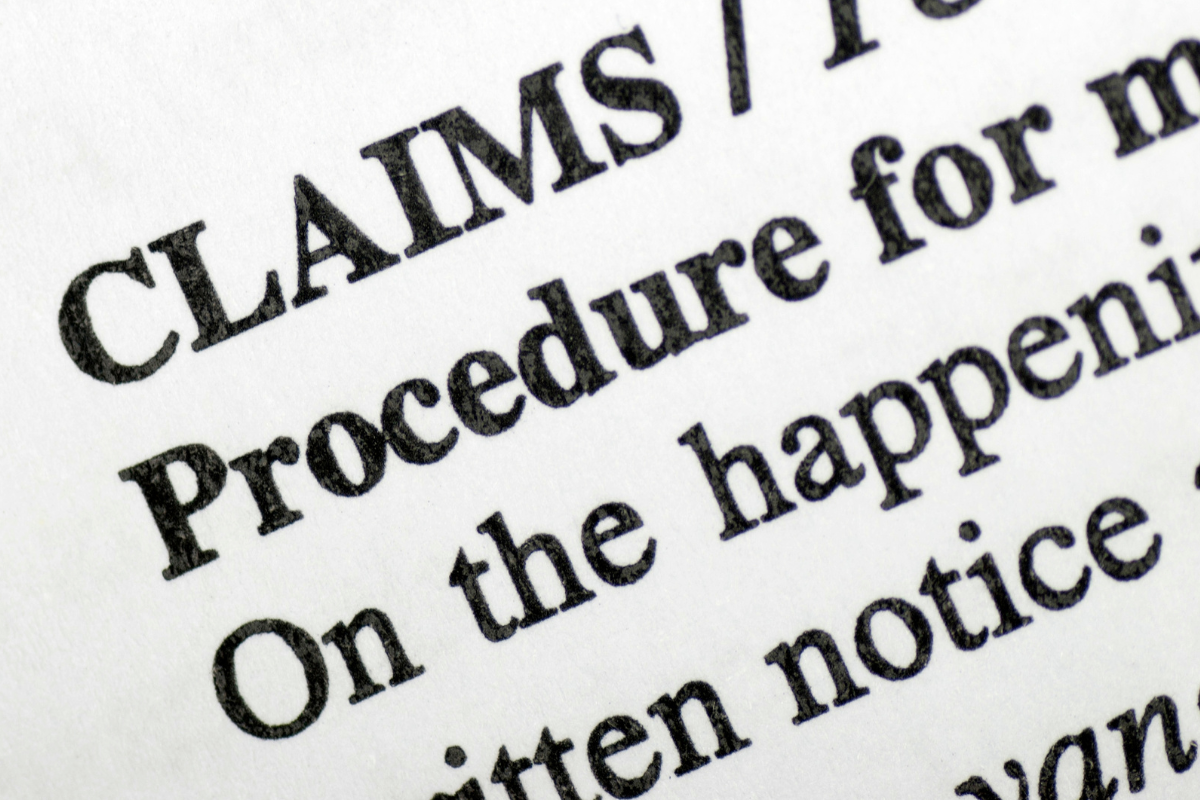
Are you a veteran seeking a streamlined path to claim the benefits you’ve rightfully earned? If so, the VA Fully Developed Claim (FDC) program is here to make your journey smoother.
The Veterans Administration’s Fully Developed Claim (FDC) initiative helps veterans successfully pursue VA benefits. It’s a streamlined approach that can dramatically slash the time required to decide on your claim. In this comprehensive guide for veterans, we will delve into the intricacies of the VA’s fully developed claim program, its operational mechanics, and its significance in 2023.
Whether this is your first time filing a claim or if you are already well-acquainted with VA procedures, you can expedite the process of securing the benefits you rightly deserve by familiarizing yourself with the FDC program. In this comprehensive guide, we’ll explore the ins and outs of the VA’s fully developed claim program, shedding light on why it’s important and how it can expedite your VA disability claim.
What Is A Fully Developed Claim (FDC)?
A Fully Developed Claim (FDC) represents a tailored strategy meticulously crafted by the U.S. Department of Veterans Affairs (VA) to facilitate the swift adjudication of VA disability claims. This innovative program empowers veterans to take the reins of their claims process, offering a streamlined pathway toward securing the benefits they rightfully deserve.
At its core, the FDC program embodies a proactive approach. Rather than waiting for the VA to gather supporting evidence and documentation, veterans embrace the responsibility of compiling all necessary materials themselves. This self-driven process ensures that claims are complete and exceptionally well-documented, leaving no room for ambiguity.
One distinctive advantage of the FDC program is its potential to expedite decision-making significantly. Generally, FDCs are processed more expeditiously than standard claims, with many veterans receiving decisions within approximately 90 days.
In essence, the FDC program places control firmly in the hands of veterans, allowing them to become the architects of their claims. By embracing this approach, veterans can enhance their chances of a favorable outcome and reduce the often lengthy wait times associated with the standard claims process.
What Is The Difference Between An FDC And A Standard Claim?
When pursuing VA disability benefits, understanding the core differences between a Fully Developed Claim (FDC) and a standard claim is pivotal. The preparation level that occurs before submission is at the heart of this distinction.
In an FDC, the veteran must gather all essential evidence and documentation. This approach ensures that the claim is complete and meticulously organized. The veteran becomes the architect of the case, shaping it into a well-structured and compelling argument.
Conversely, in a standard claim, the VA assumes a more active role in the evidence-gathering process. While this may seem convenient, it can potentially prolong the processing time. The VA may need additional time to collect the required documentation, leading to delays in deciding a claim.
Therefore, opting for an FDC places the veteran firmly in the driver’s seat to expedite the process by presenting a comprehensive, well-documented claim. By understanding this fundamental difference, veterans can make informed choices that align with their preferences and timelines when pursuing VA disability benefits.
What Is The Process For Utilizing The FDC Program?
To make the most of the VA Fully Developed Claim program, follow these steps to submit your application:
- Determine Your Medical Condition: Identify the specific medical condition for which you’re seeking benefits, along with any secondary conditions related to the primary one. The time required varies depending on how quickly you can define and document your condition.
- Gather Your Records: Collect all relevant medical records, military service records, and supporting documents that prove a service connection with your injury. Generally, it takes several weeks to compile all the necessary records.
- Fill Out VA Form 21-526EZ Fully Developed Claim: Complete the official FDC submission form with all required information. Typically, obtaining and filling out the proper form accurately takes a few hours.
- Submit Your Claim: Send your completed FDC application through the VA’s official website (eBenefits) or by mail. Submission time varies depending on the chosen method, but it can be done in a day. FDCs are often processed faster than standard claims. On average, it may take around 90 days to receive a decision, but this timeline can vary based on individual circumstances.
- Stay Informed: Regularly check your VA claim status through the VA’s official website. Staying on top of your claim is an ongoing process. You must check as often as needed throughout the claim processing period.
Hints & Tips To Prevent Denial
First, you can file a claim with the U.S. Department of Veterans Affairs online through the VA’s website (eBenefits) or by submitting VA Form 21-526EZ and beginning the process.
Currently, one of the most convenient methods for verifying the status of your VA claim is to use the VA’s official website. To do so, you must create an account to check your VA claim status.
If you need help compiling, organizing, and submitting your FDC documentation, you can consult with a VA accredited lawyer or law group like VetsForever or a Veteran Service Officer (VSO) for assistance.
To get a general idea of the value of their benefits claim, veterans can use one of the many online VA Disability Calculator apps to estimate their potential compensation, using VA disability rates 2023.
Another resource that can aid a veteran’s family is the Civilian Health and Medical Program of the Department of Veterans Affairs (CHAMPVA) program, which ensures that essential healthcare coverage is available for these deserving individuals.
What Are The Components Of A Fully Developed Claim?
A fully developed claim comprises several critical components that must be included to receive a favorable decision:
- Medical Records: Gather all relevant medical records, including treatment notes, diagnosis reports, and test results.
- Service Records: Provide military service records to establish the connection between your condition and your service.
- Supporting Statements: Include statement in support of claims from medical professionals, friends, or family members who can attest to your condition’s impact on your daily life.
- Disability Benefits Questionnaire: If applicable, submit the DBQ form to provide additional details about your condition.
- The official submission form for your FDC: Submit VA Form 21-526EZ.
Each component must be meticulously researched and properly submitted to ensure the best outcome for the veteran’s claim.
Additional Resources and Support
To assist veterans with their FDC submission, the VA provides numerous resources to guide them and expedite the process.
First, you can file a claim with the U.S. Department of Veterans Affairs online through the VA’s website (eBenefits) or by submitting VA Form 21-526EZ and beginning the process.
Currently, one of the most convenient methods for verifying the status of your VA claim is to use the VA’s official website. To do so, you must create an account to check your VA claim status.
If you need help compiling, organizing, and submitting your FDC documentation, you can consult with a VA accredited lawyer or law group like VetsForever or a Veteran Service Officer (VSO) for assistance.
To get a general idea of the value of their benefits claim, veterans can use one of the many online VA Disability Calculator apps to estimate their potential compensation, using VA disability rates 2023.
Another resource that can aid a veteran’s family is the Civilian Health and Medical Program of the Department of Veterans Affairs (CHAMPVA) program, which ensures that essential healthcare coverage is available for these deserving individuals.
Conclusion
The program encompassing the VA fully developed claim timeline 2024 is a valuable tool for veterans seeking a quicker and more efficient path to obtaining their entitled benefits. By following the outlined steps and ensuring your claim is complete and well-documented, you can significantly increase your chances of a successful outcome.
Don’t hesitate to seek assistance and resources to navigate this process effectively, and always stay informed about the status of your claim through the VA’s official channels. Your path to benefits is within reach, and the FDC program can help you get there faster.
FAQs
Who Uses the Fully Developed Claim Program?
The FDC program is available for veterans who want to expedite the processing of their VA disability claims. It is especially helpful to veterans filing for benefits for one of the top 20 VA disability claims.
How Long Does a Fully Developed Claim Take?
Generally, FDCs are processed faster than standard claims, often within 90 days. However, timelines can vary based on individual circumstances and claim complexity.
What Is the Difference Between a Fully Developed Claim and a Standard Claim?
The primary difference lies in the level of preparation. In an FDC, the veteran gathers and submits all required documentation, while the VA may assist in gathering documents for a standard claim.
Can I Get Help With My FDC?
Yes, you can seek guidance from a VA representative or an accredited Veteran Service Officer (VSO) for assistance with your FDC.
What Happens if My Fully Developed Claim Is Denied?
If your FDC is denied, you have the option to appeal the decision and provide additional evidence to support your claim.
Are FDCs Faster Than Standard Claims?
Yes, Fully Developed Claims (FDCs) often enjoy expedited processing, with an average decision time of around 90 days, which is significantly swifter than the standard claims process due to the proactive preparation by the veteran.
Can I Make Changes to My FDC After Submission?
Certainly, you can make adjustments to your Fully Developed Claim (FDC) post-submission, but thorough documentation and relevancy to your initial claim are imperative to maintain the integrity of your application.
Can I Appeal My FDC Decision?
Yes, if your FDC is denied, you have the right to appeal the decision through the VA’s appeals process, providing additional evidence to support your claim.

